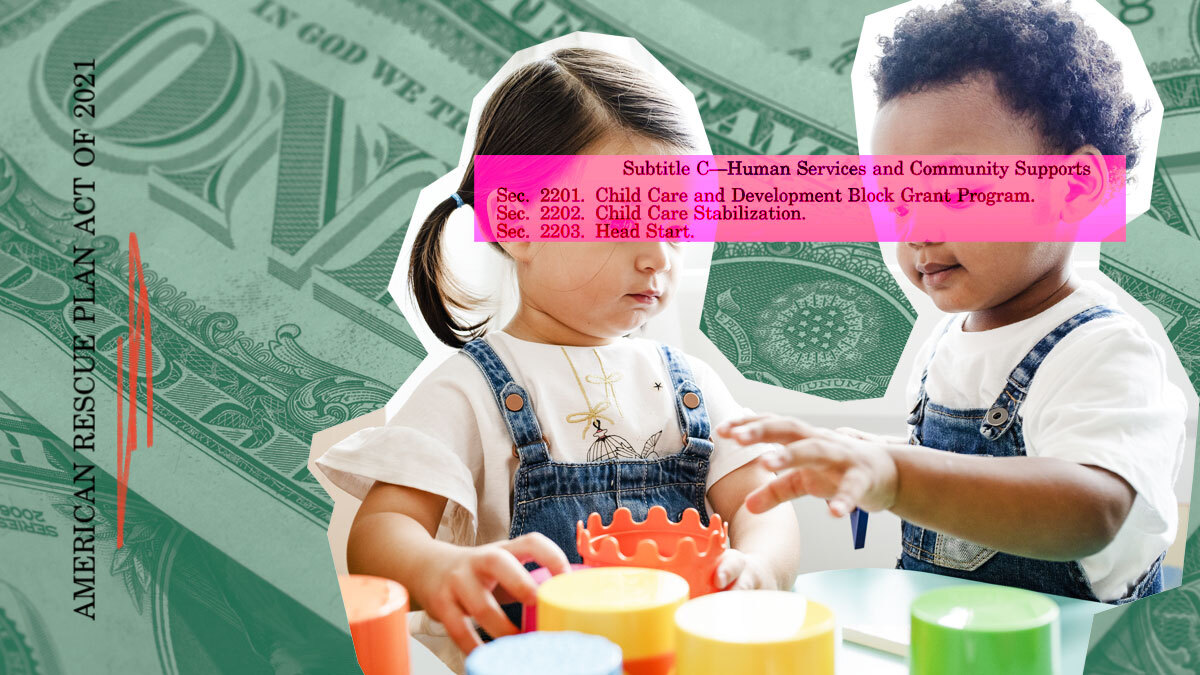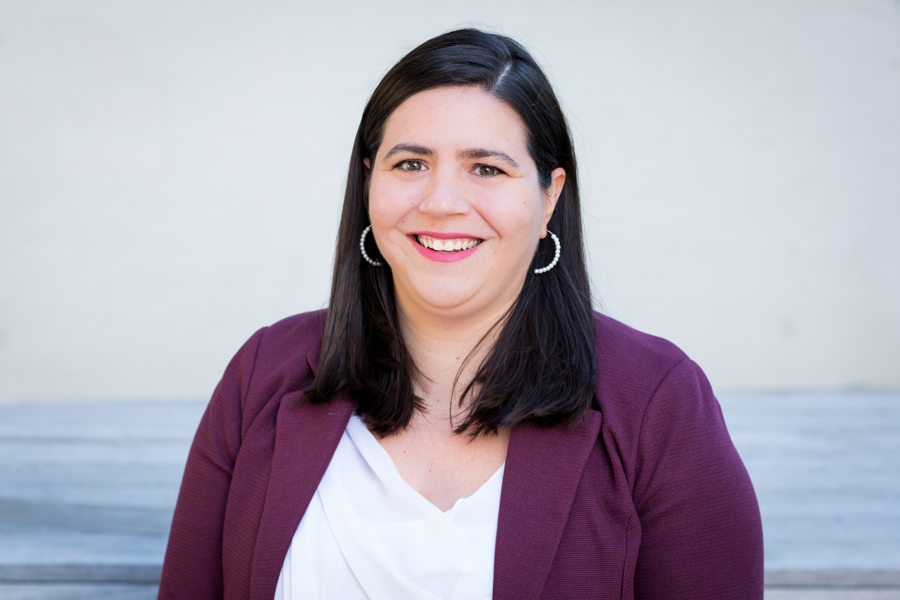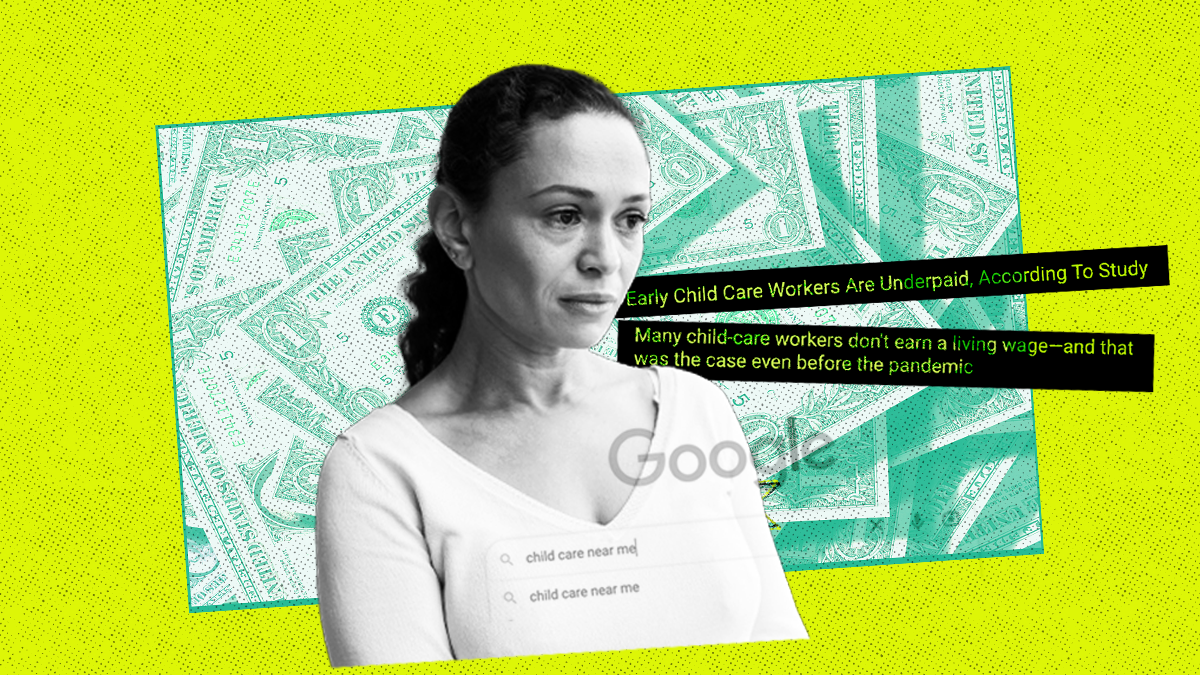Abortion rights, women of color, and LGBTQIA+ people are under attack. Pledge to join us in fighting for gender justice.
States Try to Rescue Child Care From the Brink—But for How Long?

Child care is in crisis. Families and child care workers are feeling the burden every day.
Over the last few months, thousands of articles have highlighted stories from the frontlines of this crisis:
- Lavida Reaves had over a decade of experience working in early childhood education. Not to mention, an associate’s degree. And yet, she was only paid $1,200 per month.
- Low pay is why, after 15 years, Reshonna Reynolds quit her job as a preschool teacher, unable to afford child care for her son.
- Natalie Saldana, a full-time student and health insurance agent, also couldn’t afford quality care for her 1.5-year-old daughter. Why? Because it was $700 per month—a price tag that is, horrifyingly, lower than average.
So many American families can see themselves in these stories. The COVID-19 pandemic has only brought more challenges, especially for women of color who make up a significant portion of the underpaid child care workforce and have the least access to affordable care for their children.
It’s clear that child care is in a precarious state. And it makes sense that many of us are feeling discouraged. But there are still reasons—as a parent, a provider, or someone like me advocating on their behalf—to feel hopeful.
In March 2021, the American Rescue Plan Act (also called ARPA) pulled the child care sector back from the brink of collapse. It provided historic amounts of funding: $24 billion for stabilization grants to help child care programs keep running and $15 billion in additional “discretionary” child care funds. A.k.a. a whole lot of money that states can use to supplement existing (and completely inadequate) child care funding and address their specific child care needs!
New research from my colleagues here at the National Women’s Law Center found that states have been using their ARPA discretionary child care funds to help providers and families. Here are just a few examples:
1. Giving providers more money, benefits, and opportunities
Even before the pandemic, nearly one in ten child care workers had an income below the federal poverty line. And fewer than one in four child care workers received health insurance through their job.
Here’s how the ARPA discretionary child care funds are helping child care workers:
- Kansas is giving full-time and part-time child care workers Workforce Appreciation bonuses, while in Alabama, eligible staff can receive a $3,000 bonus every quarter… for up to two years.
- In Washington, some providers will be eligible for health insurance with a $0 premium. Oregon plans to fund health care and retirement benefits for child care providers.
- Utah will take steps to improve professional development—funding scholarships to help providers earn their degrees, complete their program accreditations, and attend conferences.
2. Making child care more affordable for families
Nationally, child care costs an average of $10,600 per year. Here’s how states are using ARPA child care funds to ease the burden:
- Indiana waived copayments (a.k.a. the weekly fee a family contributes) on child care assistance for a full year.
- New Mexico greatly expanded the number of families eligible for child care assistance. How? By raising the income limit to qualify for help from 200% of the federal poverty level to 400%—which is $111,000 a year for a family of four.
- Alaska is providing grants to families not typically covered by child care assistance, like those who work nontraditional hours and those in the first responder and medical fields who would otherwise be ineligible because they earn too much.
3. Making child care actually available
Since February 2020, a total of 88,400 child care jobs have been lost. The result? About one in three working families with young children are having trouble finding child care.
Here’s how ARPA discretionary child care funds are increasing accessibility:
- Oklahoma provided grants to create new child care options in places with the fewest available programs.
- Wyoming is helping providers by waiving background check fees, making it easier for qualified workers to start (or continue!) providing care.
- Maine is providing a one-time $2,000 stipend to newly licensed family child care providers in rural and other areas where care is extremely limited.
Across the board, and across every state, ARPA discretionary funding has made child care more available, accessible, and affordable, while also supporting workers.
As a child care advocate, reflecting on these successes has helped me maintain hope. However, the little progress we have made is already under threat. Because states have to spend that money by September 2024. And right now, it’s unclear if more support is coming, potentially leaving families and providers in the lurch.
Here’s my take: Progress on child care shouldn’t have an expiration date. We need long-term, sustained, and significant funding to maintain the progress that’s been made and to go further in supporting children, families, and child care workers.
To learn more, check out our report: Child Care Rescue: How States Are Using Their American Rescue Plan Act Child Care Funds.
And to take action, call on Congress to significantly increase child care funding—the sooner the better.





